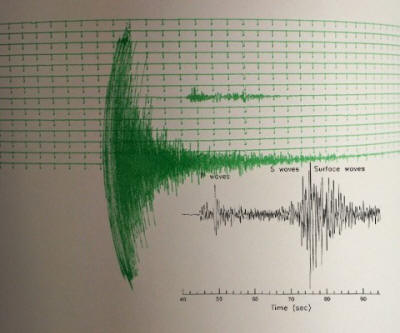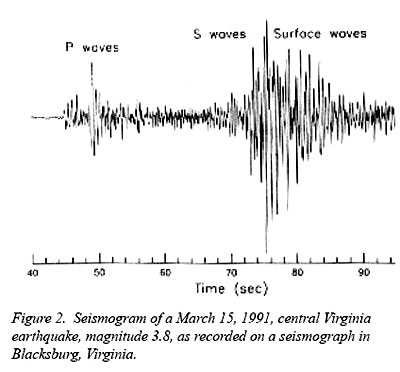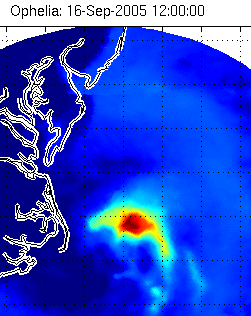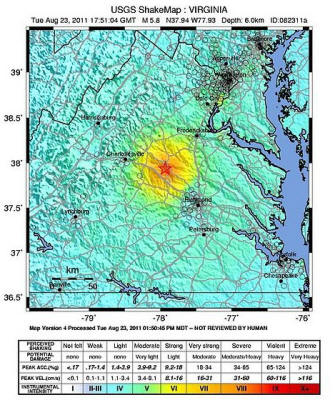1 -
Location
The location is the most obvious anomaly
for such a powerful quake.
Although the area of the U.S. where the
earthquake initiated sits on the edge of an ancient tectonic plate
called the
Craton Plate (below video), it is considered a relatively dormant or
settled area.
In other words, it's not a very active earthquake
zone.
Therefore, any noticeable earthquake is
unusual, let alone a 5.9 monster that was reportedly felt 500 miles
away.
Furthermore, if one is inclined to believe that earthquakes
can be manipulated, the epicenter occurring close to Washington D.C.
(with all its sensitive military and government infrastructure)
raises some suspicions.
Admittedly, that's conjecture, but
considering the following oddities it might be more believable by
the end of the article.
2 -
Unusually Shallow Depth
The initial hypocenter (depth) of the
quake reported by the establishment media was, wait for it, wait for
it, only 0.1 miles or about 528 feet (161 meters) deep.
That's right, AFP
announced the depth
with certainty,
"The Pentagon, the US Capitol and
monuments in the nation's capital were all evacuated after the
5.9-magnitude quake, which was shallow with its epicenter only
0.1 miles underground."
The depth was later adjusted to a more
believable 3.7 miles (5.95 kilometers) beneath the surface.
Still, shallow-focus quakes usually only
occur in areas abundant in seismic activity, like the
ring of fire.
And the depths of those shallow-focus earthquakes are usually in the
tens of kilometers deep. The Earth's crust in the Eastern U.S. where
"the fault lines are more healed" is described by CBS News as "older
and colder" than out West.
Which, according to
Wikipedia, means it
should have been a deep-focus earthquake with a depth ranging from
300 to 700 kilometers. Certainly not one barely below the Earth's
surface.
3 -
Odd Seismograph Reading
A reporter from Press Core
received an
anonymous email from someone claiming to be in the U.S. Air Force
that stated the Virginia earthquake,
“wasn’t a natural earthquake and not
a HAARP earthquake."
The reporter was instructed to find a
seismograph of the Washington DC area earthquake and compare it to a
past earthquakes and seismic readings of the
alleged underground
nuclear test by North Korea that resulted in a
4.7 magnitude tremor
at a depth of zero.

Seismograph of
Virginia quake in green
Washington and Lee
University (85 miles from epicenter)
Press Core writes, the green lines indicate the blunt tremor that
was felt in Washington D.C. and the black lines are a transparent
overlay of a normal earthquake seismograph from
a file from
Virginia Division Mineral Resources on Earthquakes.
That file describes a typical natural
occurring earthquake as:
When a fault ruptures, energy is
released in the form of seismic waves. The first waves to reach the
earth’s surface are primary or 'P' waves (Figure 2).

P waves are compressional waves that travel at a speed of about four miles per
second near the surface - faster as depth increases. The next waves
to reach the earth’s surface are secondary or 'S' waves.
S waves are shear waves that move at a
speed of about 1.5 miles per second.
P and S waves are body waves that travel
through the earth much like sonar waves travel through water.
Surface waves, which are slower than S waves, travel along the
surface of the earth much like waves at the surface of the ocean.
S
waves and surface waves cause the most destruction at the earth’s
surface.
The article
concludes:
"What is missing from the
seismograph for the Washington DC area 5.8 magnitude earthquake
are the primary or 'P' waves. All earthquakes that are the
direct result of fault rupture have these primary or 'P' waves.
Nuclear detonations do not."
4 -
Distance Felt
As my introduction stated, I've never
"felt" an earthquake whose epicenter was farther than 50 miles away.
Of course, this doesn't mean that it's not possible, as clearly this
was felt upwards of 500 miles from the epicenter.
The
CBS article quoted above that
referred to the crust as "older and colder" also uses that argument
to explain why tremors were felt so far away:
"The East is far less seismically
active - but when earthquakes do hit, that hard ground is far
more effective at conducting the seismic waves. When you hit it,
it rings like a bell," said Christopher Scholz a professor of
geophysics at Columbia University's Lamont-Doherty Earth
Observatory."
This seems a bit contradictory given the
shallow depth of the quake, but there may be some validity to the
"bell" theory.
The fact remains, earthquakes whose
effects travel long distances are uncommon, hence the reason for the
CBS article about why the quake was so "widely felt."
5 - 'Remarkably
Low' Number of Aftershocks
Amy Vaughan, a geophysicist with the USGS Earthquake Information Center in Colorado
told CBS News that,
"For the size earthquake that
occurred, I think the number of aftershocks so far has been
remarkably low."
Don Blakeman, another
geophysicist at the Earthquake Information Center, added,
"Typically, the larger the quake,
the longer and the greater extent of aftershocks. Shallow
earthquakes like the one in Virginia also tend to generate
numerous aftershocks."
The lack of aftershocks led the USGS to
report that the
Virginia quake may be just a foreshock of something
larger to come.
A
foreshock is an earthquake that occurs
before a larger seismic event (the mainshock) and is related to it
in both time and space. I'm not sure what this means other than it's
just another abnormality about this quake.
6 - Instantaneously
Knocked Irene Off Course
Kevin Hayden and Glenn Kreisberg
reported,
"Coincidentally, the time frame
leading up to Virginia/DC/New York area experiencing freak
seismic activity, Hurricane Irene begins to weaken and move off
course, avoiding its initial path of Havana, inland Florida, the
Carolinas, and eventually, the Washington, DC area.
The newly projected paths show that
it may barely clip the eastern coast, if at all. Just as Ophelia
did when it threatened the same region."
Irene stalled and changed directions
similar to Ophelia seen in the graphic provided below. Clearly, these
types of drastic changes are not a natural path for hurricanes.

A few articles have speculated that
HAARP earthquake weapons were to
blame, in conjunction with manipulating hurricane Irene.
Indeed,
when one knows even the
basic capabilities of HAARP, this does not
seem too far-fetched. Press Core seems to think the seismic data
proves it was more similar to an underground nuclear detonation.
One thing is for sure, the mysterious
characteristics of the Virginia quake seem to indicate that it
was
not a typical earthquake.




